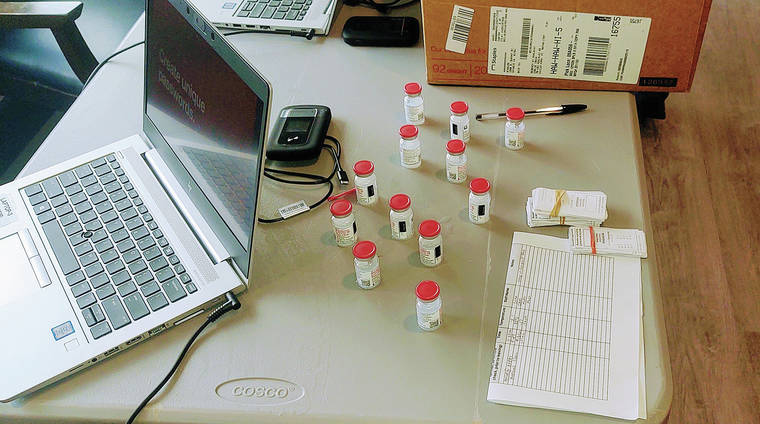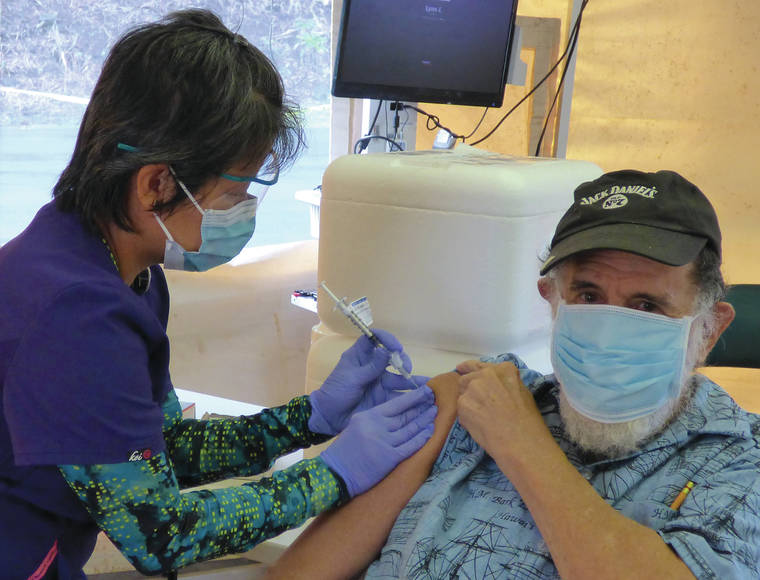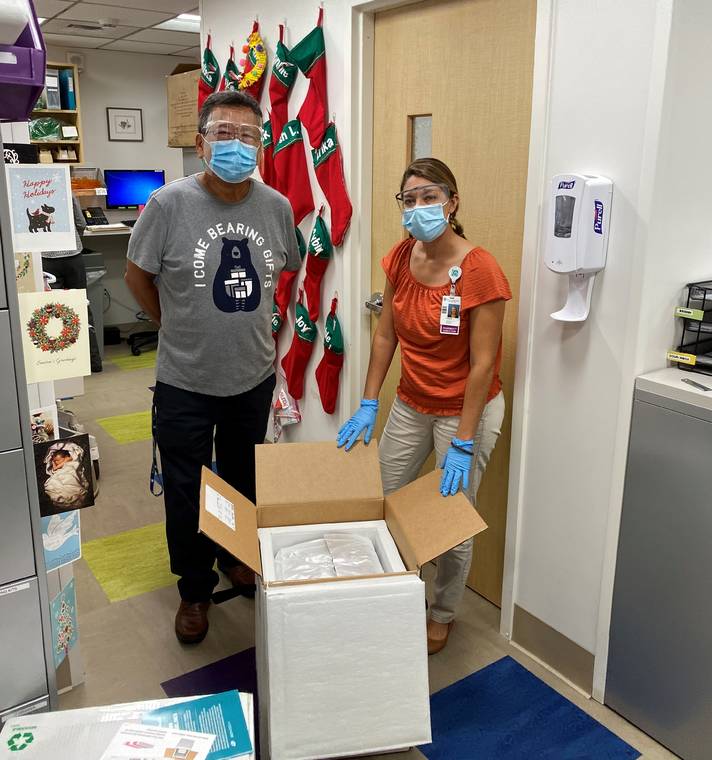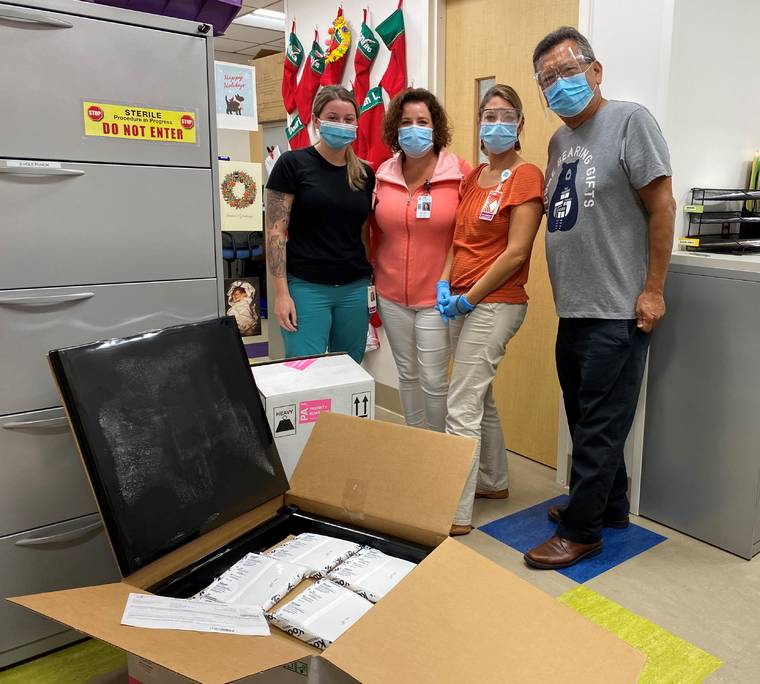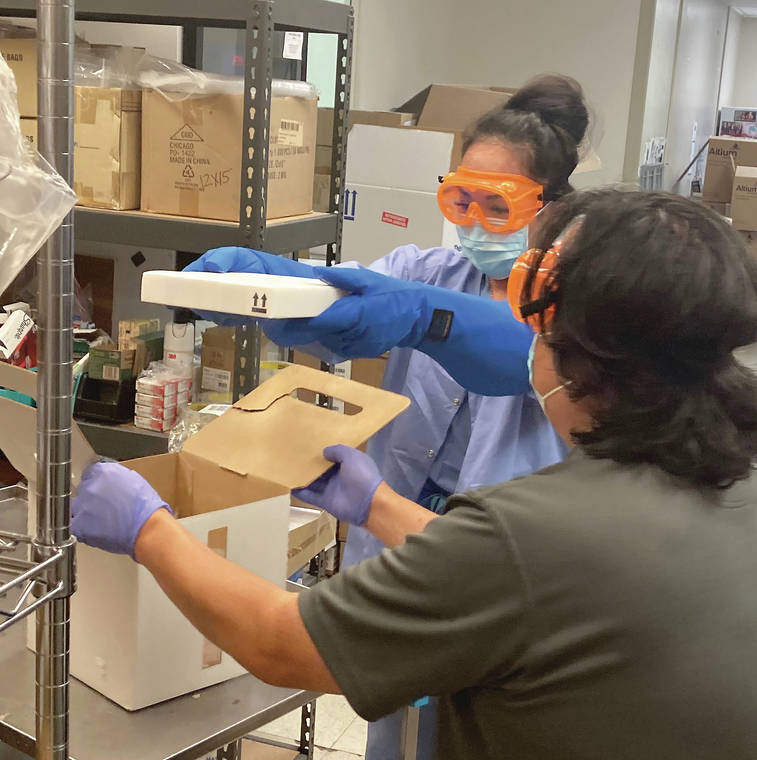Kona Community Hospital anticipates it will begin immunizing staff for COVID-19 on Wednesday.
The Kealakekua facility expects to receive one tray of 975 doses Monday afternoon, said spokeswoman Judy Donovan. The Hawaii Health Systems Corporation’s West Hawaii Region, which includes Kohala Hospital, Alii Health Center and the Kona Ambulatory Surgery Center, anticipates 700 of its staffers will be vaccinated, including 500 at Kona Community Hospital alone.
“We’ll begin vaccinations on Wednesday. Employees are definitely indicating interest in receiving the vaccine,” Donovan said.
On Tuesday, The Queen’s Medical Center in Honolulu administered the first five doses of the vaccine to high-risk health care workers, said Lt. Gov. Josh Green. The facility was the first in the state to receive 975 doses on Monday.
“It is exciting. It does bring hope and it’s going well,” Green said during a Honolulu Star-Advertiser Spotlight Hawaii program livestreamed Wednesday. “Yesterday, was just a little test run so that we could see the processes that we’re going to be doing.”
Green said four additional trays of 975 doses of Pfizer’s COVID-19 vaccine were to arrive Wednesday earmarked for Oahu’s Kaiser Permanente, Kapiolani Medical Center, Straub Medical Center, Waianae Coast Comprehensive Health Center and The Queen’s Medical Center West Oahu.
The first five trays went to Oahu based on preorder and refrigeration capacity.
“We had to make sure that people had already well-established in advance, assured, very low temperature freezers, otherwise the vaccine becomes, as you know, useless,” he said.
Next week, Green said the state expects to receive “a lot” of the vaccine.
“It looks like in the next seven to 14 days, we’ll get about 23 additional trays. So, you’ll see how the thousands and thousands of vaccines open up,” he said, later commenting that he himself is slated to be inoculated next week.
Many of those 23 trays are going to the neighbor islands, including Kona Community Hospital, Queen’s North Hawaii Community Hospital, Maui Memorial Hospital and facilities on Kauai, Green said.
Queen’s North Hawaii Community Hospital in Waimea had a less definite estimated time of arrival for the vaccine than Kona, anticipated receiving the vaccine for its staff “next week or the following week.”
“Actual vaccinations would begin a day or so afterwards depending on the arrival of the ancillary supply box,” said Lynn Scully, marketing and communications manager.
As reported earlier this week, Hilo Medical Center is expected to receive one tray of 975 doses on Monday, according to spokeswoman Elena Cabatu.
“We are preparing our vaccine clinic to administer our vaccines to our employees who are willing to take it,” she said Wednesday.
By the end of December, the state is set to receive 47 trays, each containing 975 doses, of the vaccine from Pfizer, according to Green. An additional 26,000 doses could come from Moderna, should the company’s vaccine receive U.S. Food and Drug Administration approval Thursday.
“These things are going to be very available as long as people are somewhat patient,” Green said, pointing to the state’s plan for vaccinating the populace. “We will get the 1a category done, and then we’ll begin to move into the other categories. So, expect to see this roll out a little slowly in the first few days and then get really ramped up in week two, three and four.”
According to the Hawaii COVID-19 Vaccination Plan, 883,600 people in Hawaii would be vaccinated during the first three stages followed by anyone who did not have access during previous allocation stages.
Green estimated Wednesday about 70% of Hawaii’s population will elect to get the vaccine.
“That’s about 980,000 people (in Hawaii). And then we’re going to be essentially immune as a state, but it’s a lot of work,” he said.
The first stage, which includes two phases, covers high-risk health workers and first-responders followed by people with comorbidities and underlying health conditions that put them at high risk and adults over age 65 living in “overcrowded settings.” An estimated 121,000 will be vaccinated during stages 1a and 1b.
That stage is anticipated to take up to two months to complete, he said pointing to the current requirement of a second shot several weeks after the first.
Stage two includes K-12 teachers and school staff; critical risk workers; people with comorbidities and underlying health conditions that put them at moderately high risk; people in homeless shelters or group homes; incarcerated individuals and staff at incarceration facilities; and all adults over age 65. An estimated 450,000 people would be vaccinated during stage two.
“Let’s say maybe your dad has high blood pressure and diabetes, and he’s 57 years old. He will be a classic phase 2 person. They’ll be contacted by his doctor,” said Green adding the state will hold community clinics and vaccination centers, as well as host various outreach campaigns to reach the populace. “That’s likely another two, three months from now where all that category is vaccinated.”
In the third stage, an additional 403,000 people would be vaccinated, including young adults between age 18 and 24 and children up to age 17. Workers in industries and occupations not included in earlier stages would also be inoculated.
“If you’re healthy, 35 years old and you don’t have any worries, you’ll be in phase 3, and that’s when just thousands and thousands of remaining people will get the vaccine — probably late spring,” Green said. “Kids will come last because, right now, they’re finishing the studies, and they’re at the very lowest risk category.”
The fourth stage would work to vaccinate an undetermined number of Hawaii residents who did not have access to or receive a vaccination during the earlier stages.
By summertime, it’s anticipated everyone who wants an immunization will be able to get one, Green said.
“I think July Fourth is a real reasonable time where we could have so many people vaccinated that we begin psychologically to think, ‘OK. Most of us are safe;’ probably still should wear a mask when we’re at gatherings, wear them in more big public places, but we will begin to put it behind us,” he said. “I think that is very possible.”
When people will have to get vaccinated again remains unclear.
“We expect it to last no less than a year,” Green said, adding studies are ongoing, though Pfizer has indicated the vaccine could last up to two years.
However, he also noted the flu shot is required each year due to mutations while the pneumonia vaccine is only needed every 10 years.
“It’s going to be somewhere in between there,” he said. “We’ll know the data by fall because millions of people are getting vaccinated and then subsequently studied.”
